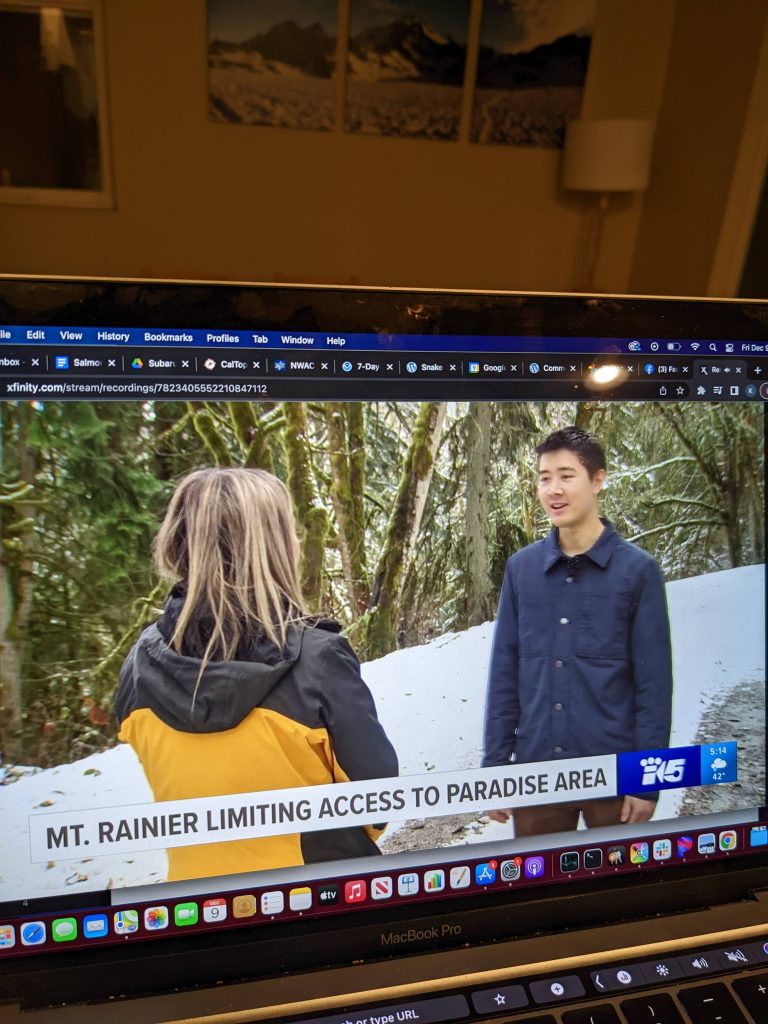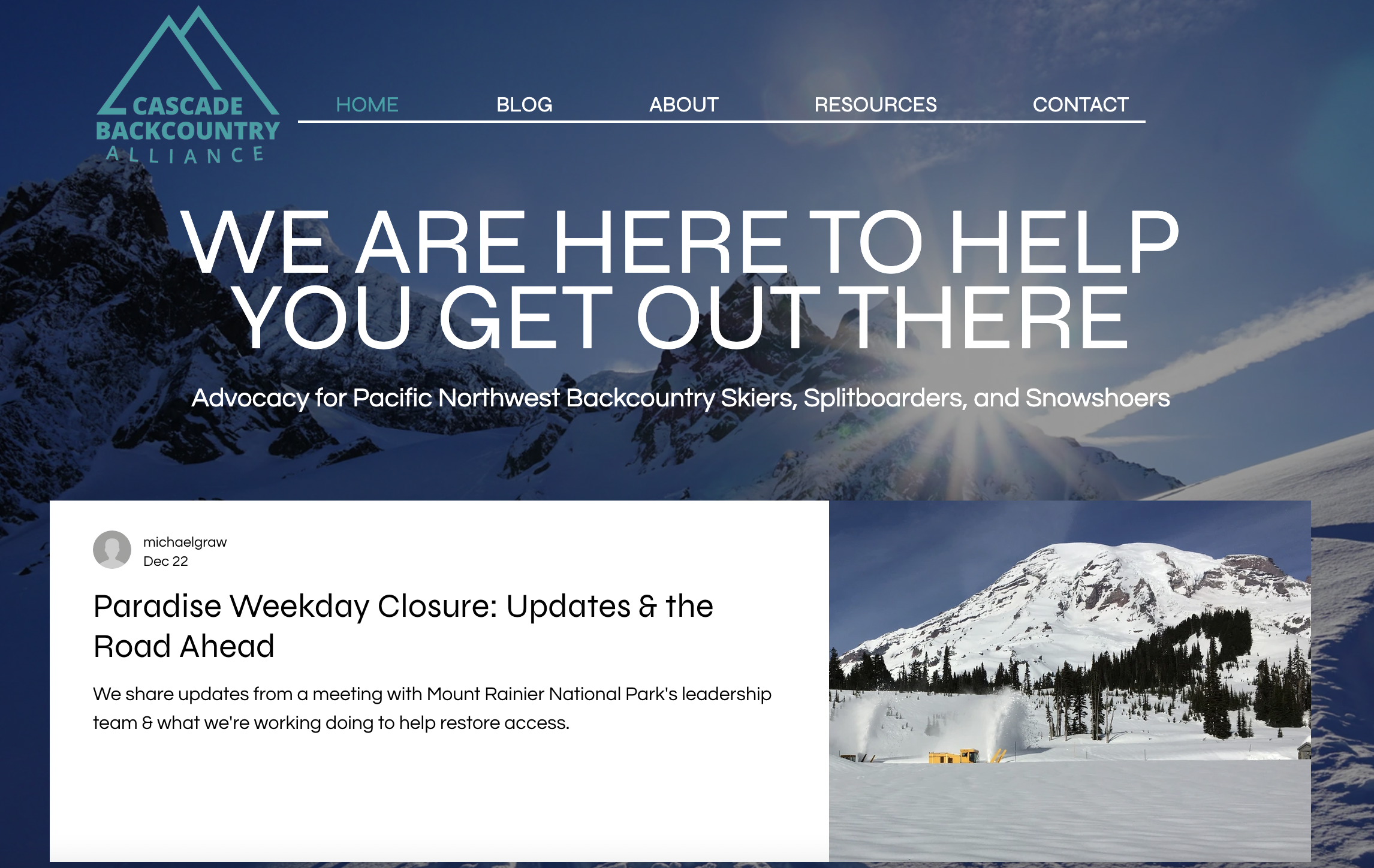Learning to Give Back
As outdoor recreators, we enjoy the fruits of a variety of both public and private investments. We might naively think that just because we pay taxes, there should be plowed roads, maintained trails, bolted anchors, and simple public access. But the sad truth is that, because of decreasing funding for government institutions, access to the mountains is slowly decreasing, even as more people are getting out. When I talk to people who have been in the Cascades for multiple generations, they talk about all the places you used to be able to get to easily that are no longer reasonable for most people.
There are a variety of organizations and advocacy groups, along with just concerned individuals, who help improve the situation. Groups like the Washington Trails Association contribute money and labor to trail work. Locals often bring out chainsaws to clear a mess of blowdowns on a Forest Service road. My friend Steve used to go out for multiple days to clear old, unmaintained trails deep in the wilderness. Up until this point, I have felt guilty for recognizing these issues but doing relatively little to help. My relationship with the mountain community has been more about “taking” than “giving”. Sure, it is just recreation, and it is okay to selfishly enjoy our hobbies, but recreation can only thrive when there are people invested in supporting the community and working together.
Over the last few years, I have watched various changes to backcountry ski access occur – WSDOT reducing the plowing of Highway 20, Crystal charging for parking, etc. These events inevitably spawned a long thread on social media with people moaning, pretending to be lawyers, and just general frustration. Strangely, there was never an organized group to represent the interests of winter backcountry users. It was not clear why. Mountain Bikers had Evergreen Mountain Bike Alliance. Climbers had the Access Fund. Nordic ski clubs were well organized. Why don’t backcountry skiers and snowshoers have representation?
Friends and I wrestled with that question for a few years, but never found a good answer. It seemed that the sport of backcountry skiing encouraged a “lone wolf” culture where other skiers are seen as a threat. On the contrary, the very essence of nordic skiing, which requires grooming, encourages collaboration and community. But this was just a psychological explanation, not a solution.
One day last fall, while hiking together, Kelly suggested that I start this advocacy group. I immediately came up with excuses: How do you even start something like this? What makes you think I can pull this off? I have no relevant experience. How do you create lasting change? I found myself mumbling the same words everyone else says: I want to help, but I need someone else to start it.
Kelly has been on the board of the Issaquah Alps Trail Club (IATC) for a few years now. IATC is a grassroots organization that has protected the foothill mountains above Issaquah. Watching her experience in IATC made me realize that individuals can have an outsized impact on the community through persistence and dedication. If it was not for Kelly, I would not have believed in myself. She convinced me to restart the Cascade Backcountry Alliance (CBA).
I use the term “restart” because the CBA had previously existed a few years earlier. I reached out to the former president, Conrad Wharton, to learn about his experiences and get permission to take over the operation. He was very excited and gave me the contacts of some others who had taken the initiative to inquire about the CBA in the past. With Jerry Drescher and my friends Dan and Madelynn, we now had a team. I met with the Executive Director of Issaquah Alps Trail Club, Paul Winterstein, to learn about how advocacy works. He connected me with his neighbor, Karen Behm, and suddenly we were invited to a meeting with Sno-Park people, nordic clubs, and other related organizations. I rebuilt our website one evening. It was beginning to look official. Our mission: to protect and expand backcountry access opportunities through representation and relationships with land owners and decision makers, while educating the community about relevant information and existing access opportunities.
In the last two months, things have moved very quickly. Through Kelly’s contacts with more established, experienced people in the world of non-profits like IATC and Mountains to Sound Greenway, and the relationships I have developed through my blog, I have found it relatively easy to connect with the important players and decision makers. Without any self promotion, others have found our website and inquired about getting involved. Now, we have 10-15 motivated people volunteering on a regular basis. It is so much more fun to do this as a team and I could not do it alone.

As the President of a rapidly growing organization, I see my role like the CEO of a non-profit. The most important things I do are building the team, setting high level goals, and strategizing around external relationships. Given I already have a full time job, it has become a bit hectic managing all the different threads of communication in our team. Sometimes I take multiple phone calls per day from other organizations and people wanting to get involved. We have built out modes of asynchronous communication, project management, and responsibilities. I know that we will be most successful when I delegate responsibilities and empower others to own their projects and relationships.
This season will look a bit different for me. I have already given up ski days to go to public meetings and know this will result in less play for me personally. But I could not stand just being one of those people on the internet that complain but do not provide any solutions. And it feels exciting to be part of something new and growing. This is a new challenge for me, one that will push me to grow in new ways and develop new skills. I am keeping my expectations low. As I have said before, I hardly have a clue what I am doing, but I am doing my best to listen to others and keep an open mind. If nothing else, I know that this will be a valuable, unique experience. But I also hope that we can make a positive difference.
You can check out the CBA Website and subscribe there for more updates if you would like! And if you have any tips and advice, please let me know!

Amazing work! Cheers to accessibility ♡ Kelly is a queen.
She is indeed 🙂
That is a great thing you have done Kyle. De Tocqueville would be proud. The community owes you a Happy New Year, and I wish you that too. Best, Thom
Thank you! Happy New Year to you!
Kyle, so much of her access depends on forest roads that are being indiscriminately closed due to lack of maintenance funds. I hope you coordinate with the non-profit working to reopen some critical access for Alpine terrain: Citizens For Forest Roads. https://www.cffr.us/
We would not have access of Glacier Creek road for the traditional Mount Baker approach if it weren’t for their efforts.
Thanks for sharing! I had not heard of that group. We’ll definitely do some research and reach out. Are you affiliated with the group in any way?